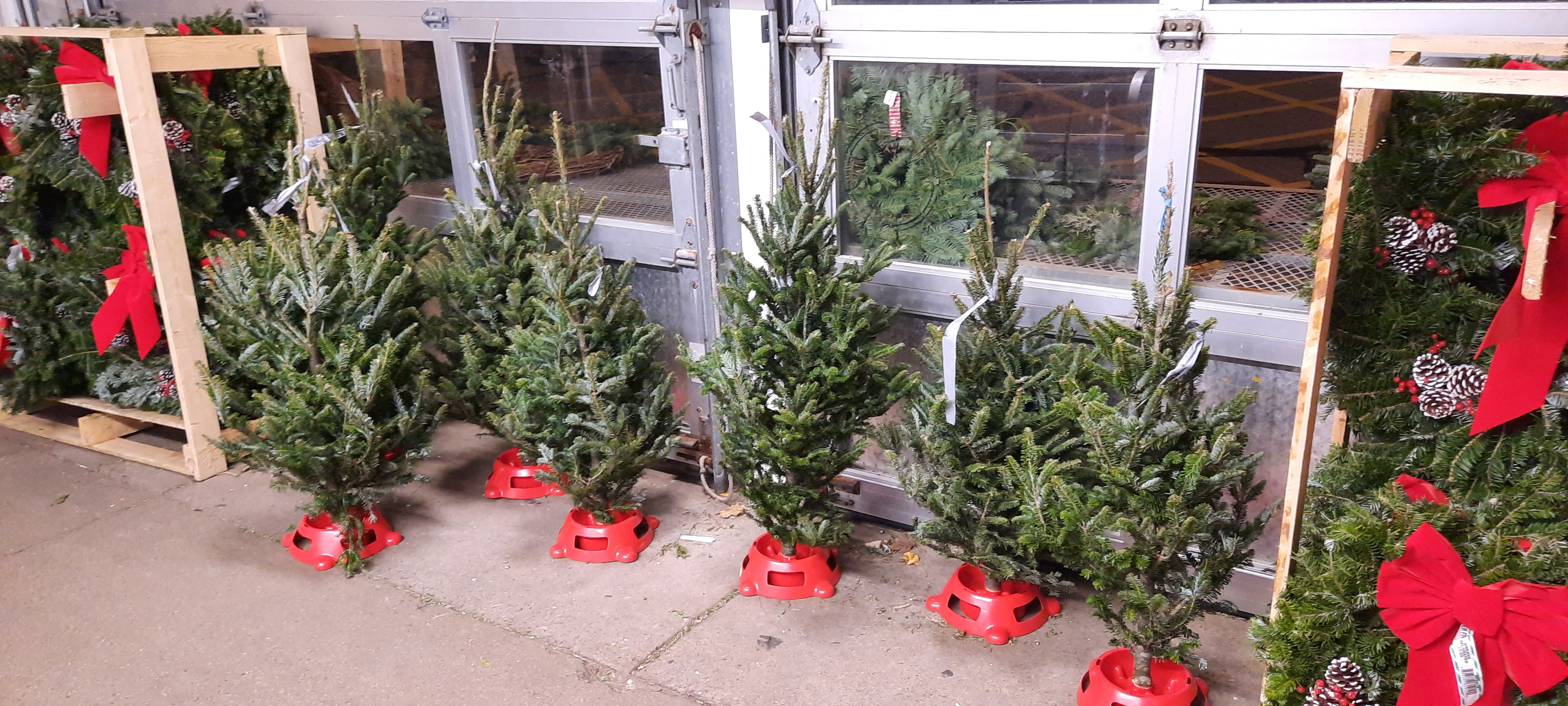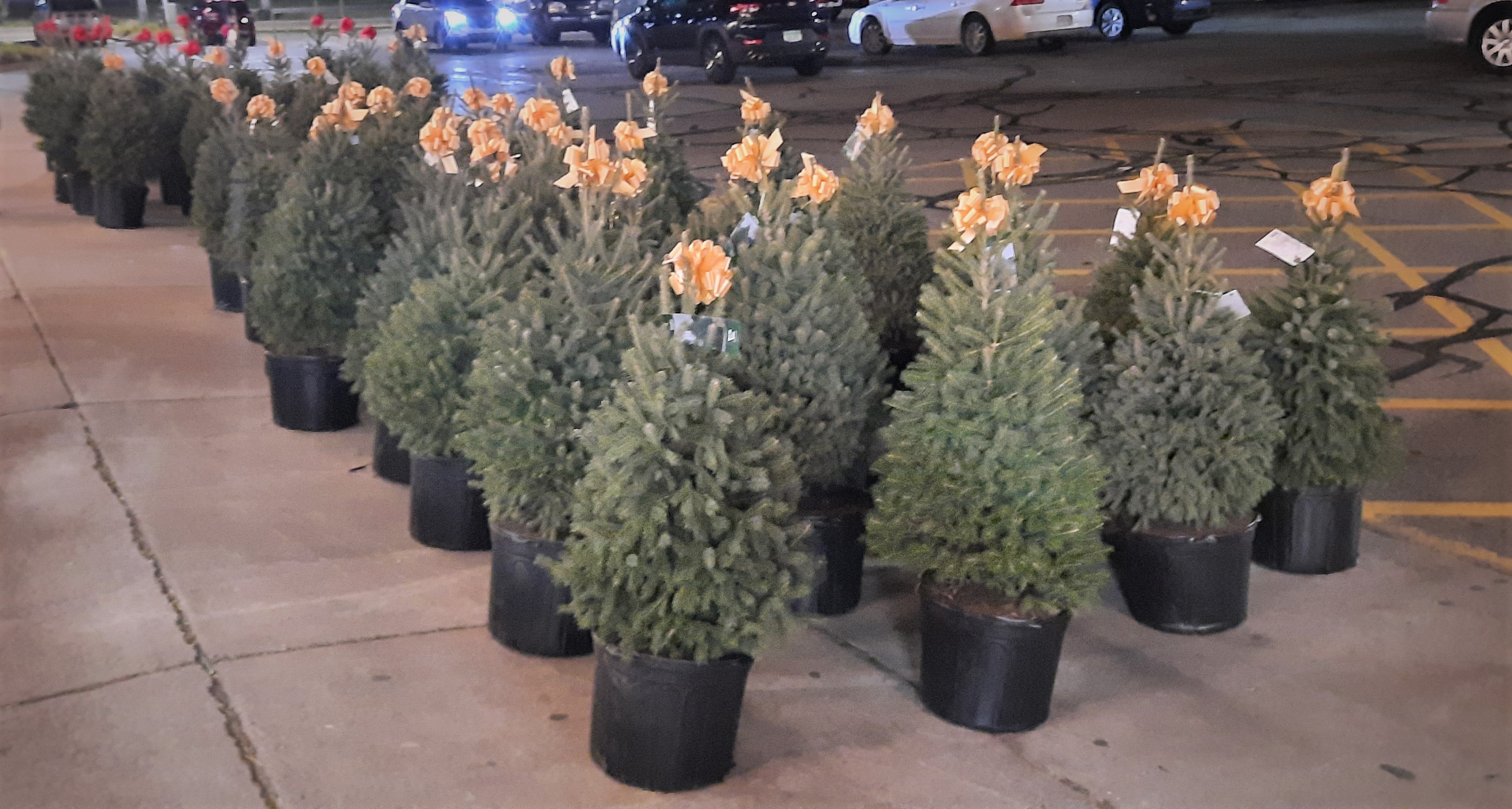Real Christmas tree options for small spaces
Tabletop trees and living trees are ideal for apartments and offices.

This holiday season, demand for real Christmas trees remains strong. Many households discovered, or rediscovered, the joy of real trees during the COVID-19 pandemic. However, some consumers desiring a real tree may feel limited by a lack of space for a typical 7-foot or 8-foot Christmas tree. Fortunately, many Christmas tree farms and tree lots offer options for table-top or other trees suitable for apartments, condos, offices, or as a second or third Christmas tree (Photo 1).
Increasingly, Christmas tree farms are catering to the small tree market by offering tabletop trees. Oftentimes these are trees that are specifically grown as tabletop trees rather than simply standard trees that were cut early (Photo 2). This means growers can grow them at a tighter spacing, increasing their efficiency. Growers also begin to trim and culture these trees earlier so that they have a fuller appearance.

Care for cut tabletop trees is the same as for standard Christmas trees. Michigan State University Extension reminds consumers to follow the standard practices of fresh tree, fresh cut, fresh water to make sure they have the best experience possible with their tree.
Another option for consumers with limited space are living Christmas trees. Living Christmas trees are conifers that are grown in containers or field-dug and placed in containers. Living trees still have their roots intact and therefore can be planted outdoors after the holidays are over.

Container-grown living trees are grown similar to landscape plants that are found in most garden centers. These trees are grown in containers with lightweight nursery substrate made of pine bark and peat moss, so they are usually lightweight and easy to handle (Photo 3).
Containerized living trees are trees that are grown in the field like a regular cut Christmas tree, but growers dig them by hand or with a mechanical tree spade and place them in containers with the rootball and soil (Photo 4). Containerized trees can be less expensive than container-grown trees, but because the roots are in soil rather than nursery substrate, are usually heavier.

Caring for living trees is similar for container-grown and containerized trees. While the tree is on display in the home, treat it as a houseplant and water it regularly. Living trees will begin to lose cold hardiness when they are in the home. The longer they are on display, the less cold hardy they will become. If left in the home too long, they can even break bud and begin to grow. Consumers that intend to eventually plant their living tree should try to minimize the length of indoor display to reduce the likelihood of cold injury.
To improve the likelihood of planting success with a living tree, place the tree in a protected but unheated space after the holidays. A screen-in porch or unheated garage are good options. Check the tree periodically and make sure the soil or substrate is moist. Once temperatures have warmed in early spring, the tree can be planted outdoors.
When selecting a living Christmas tree, it is important to select a type of tree that will do well in the landscape after planting. Fraser fir, which is the premier species for cut Christmas trees, is not always the best choice as a landscape tree as it requires acidic, well-drained soils. In contrast, spruces, including white spruce, black hills spruce, Norway spruce and Serbian spruce, are well-suited for most environments in Michigan. Most living trees will be tagged with the tree type. If not, ask the retailer to identify the tree for you.



 Print
Print Email
Email

